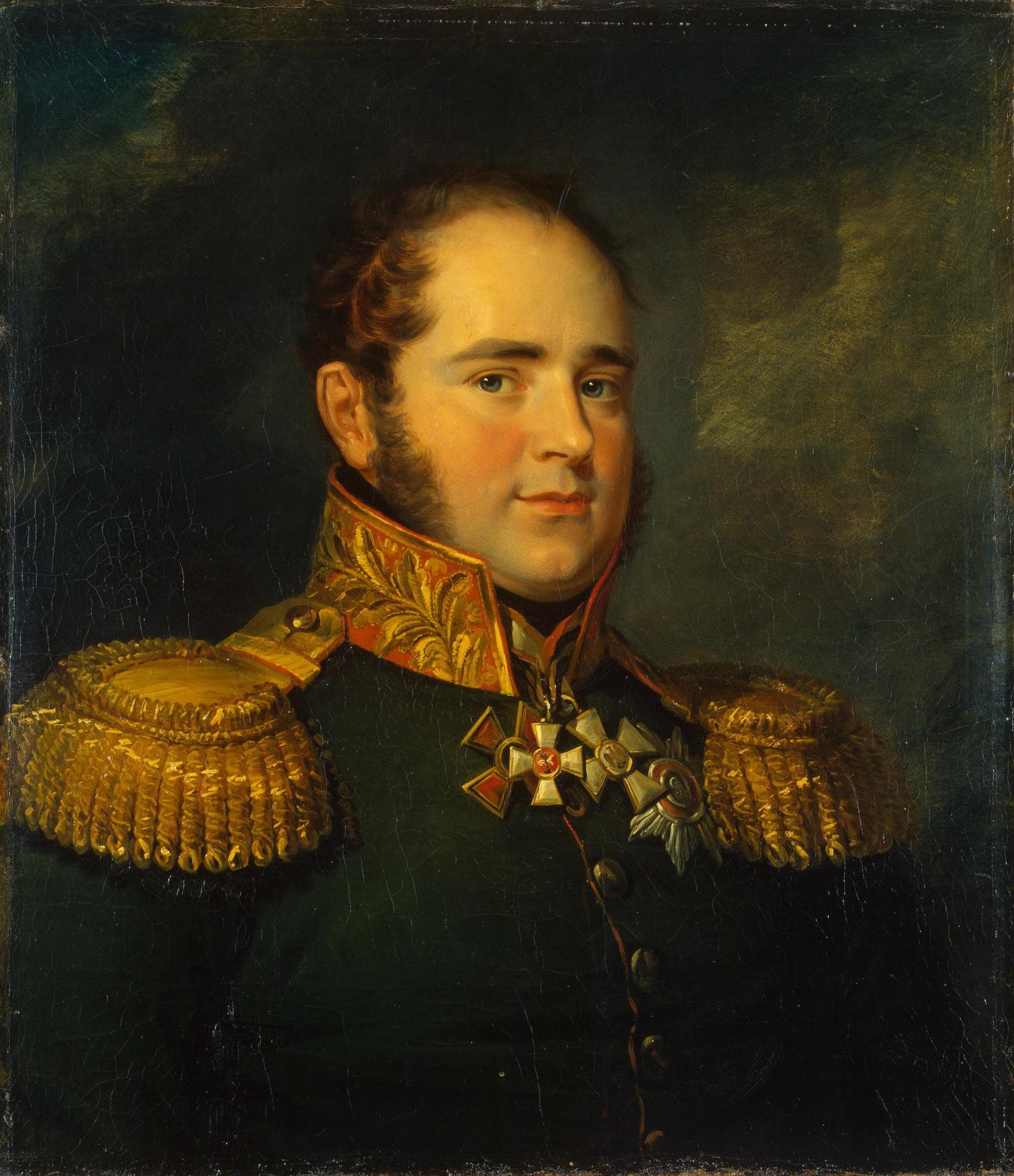Karl Baggovut (birth name: Karl Gustav von Baggehufwudt) was born in 1761 in Perila, Estonia, in the family of Estland nobles. At the age of 17, he was enrolled as a second lieutenant in the Tobolsk Infantry Regiment.
Baggovut took part in the most important military campaigns of the late 18th century. As part of the Dnieper Regiment, he fought with the Crimean Tatars in 1781-1782. He fought with the Siberian Grenadier Regiment in the Russo-Turkish War of 1787-1791. He also participated in the assault on Praga, a suburb of Warsaw, in 1794. In 1799 he was promoted to the rank of major general.
In the French campaign of 1806–1807, Baggovut was twice contused, but he was considered one of the bravest military leaders of the Russian army. For the distinction in the battle of Pultusk, he was rewarded the Order of St. George, 3rd class. The Major General participated in the battles of Eylau and Heilsberg, as well as in the decisive battle of Friedland on June 2, 1807, which led to the Treaties of Tilsit.
In the same year, Baggovut was promoted to lieutenant general. In the Russo-Swedish War of 1808–1809, he led the troops on the shores of the Gulf of Bothnia, where he gained several victories.
In the campaign of 1812, Baggovut commanded the 2nd Infantry Corps of the 1st Western Army. In the battle of Borodino on August 26, his regiments were sent to the Utitsa village to reinforce the thinned out left wing troops. After Lieutenant General Nikolai Tuchkov was lethally wounded, Baggovut took the command of the troops on the left flank.
For the courage shown in the battle, the general was awarded the Order of St. Alexander Nevsky, but he had never received it. At the battle of Tarutino on October 6, 1812, Baggovut was killed by the first shots of the French battery.
In his personal letter to the Baggovut’s widow, Alexander I wrote: “I have lost a brave commander, useful to the Motherland.” After the death of Baggovut, Commander-in-Chief Mikhail Kutuzov said that the Russian army had lost one of the most skilled corps commanders.
The portrait of Karl Baggovut was painted posthumously in the art studio of English painter George Dawe in the 1820s. The drawing by French artist Louis de Saint-Aubin was possibly used as a prototype. The portrait was included in the Military Gallery of the Winter Palace dedicated to the heroes of the Patriotic War of 1812. A copy of Baggovut’s portrait created in 1964 is kept in the Museum-Panorama ‘Battle of Borodino’.
Baggovut took part in the most important military campaigns of the late 18th century. As part of the Dnieper Regiment, he fought with the Crimean Tatars in 1781-1782. He fought with the Siberian Grenadier Regiment in the Russo-Turkish War of 1787-1791. He also participated in the assault on Praga, a suburb of Warsaw, in 1794. In 1799 he was promoted to the rank of major general.
In the French campaign of 1806–1807, Baggovut was twice contused, but he was considered one of the bravest military leaders of the Russian army. For the distinction in the battle of Pultusk, he was rewarded the Order of St. George, 3rd class. The Major General participated in the battles of Eylau and Heilsberg, as well as in the decisive battle of Friedland on June 2, 1807, which led to the Treaties of Tilsit.
In the same year, Baggovut was promoted to lieutenant general. In the Russo-Swedish War of 1808–1809, he led the troops on the shores of the Gulf of Bothnia, where he gained several victories.
In the campaign of 1812, Baggovut commanded the 2nd Infantry Corps of the 1st Western Army. In the battle of Borodino on August 26, his regiments were sent to the Utitsa village to reinforce the thinned out left wing troops. After Lieutenant General Nikolai Tuchkov was lethally wounded, Baggovut took the command of the troops on the left flank.
For the courage shown in the battle, the general was awarded the Order of St. Alexander Nevsky, but he had never received it. At the battle of Tarutino on October 6, 1812, Baggovut was killed by the first shots of the French battery.
In his personal letter to the Baggovut’s widow, Alexander I wrote: “I have lost a brave commander, useful to the Motherland.” After the death of Baggovut, Commander-in-Chief Mikhail Kutuzov said that the Russian army had lost one of the most skilled corps commanders.
The portrait of Karl Baggovut was painted posthumously in the art studio of English painter George Dawe in the 1820s. The drawing by French artist Louis de Saint-Aubin was possibly used as a prototype. The portrait was included in the Military Gallery of the Winter Palace dedicated to the heroes of the Patriotic War of 1812. A copy of Baggovut’s portrait created in 1964 is kept in the Museum-Panorama ‘Battle of Borodino’.




